Related Research Articles

The Madras Presidency or Madras State, officially called the Presidency of Fort St. George until 1937, was an administrative subdivision (state) of British Raj and later the Republic of India. At its greatest extent, the presidency included most of southern India, including all of present-day Andhra Pradesh, almost all of Tamil Nadu and parts of Kerala, Karnataka, Odisha and Telangana in the modern day. The city of Madras was the winter capital of the presidency and Ooty (Udagamandalam) was the summer capital.

The district magistrate, also known as the district collector or deputy commissioner, is a career civil servant who serves as the executive head of a district's administration in India. The specific name depends on the state or union territory. Each of these posts has distinct responsibilities, and an officer can assume all of these roles at once. The district magistrate is primarily responsible for maintaining law and order, while the district collector focuses on land revenue administration, and the deputy commissioner is in charge of overseeing developmental activities and coordinates government departments. Additionally, they also serve as election officers, registrar, marriage officer, licensing authority, and managing disaster responses, among other things. While the specific scope of duties may vary from state to state, they are generally similar. The district magistrate comes under the general supervision of divisional commissioner.

Kurmi is traditionally a non-elite tiller caste in the lower Gangetic plain of India, especially southern regions of Awadh, eastern Uttar Pradesh and parts of Bihar and Jharkhand. The Kurmis came to be known for their exceptional work ethic, superior tillage and manuring, and gender-neutral culture, bringing praise from Mughal and British administrators alike.

The Permanent Settlement, also known as the Permanent Settlement of Bengal, was an agreement between the East India Company and landlords of Bengal to fix revenues to be raised from land that had far-reaching consequences for both agricultural methods and productivity in the entire British Empire and the political realities of the Indian countryside. It was concluded in 1793 by the Company administration headed by Charles, Earl Cornwallis. It formed one part of a larger body of legislation, known as the Cornwallis Code. The Cornwallis Code of 1793 divided the East India Company's service personnel into three branches: revenue, judicial, and commercial. Revenues were collected by zamindars, native Indians who were treated as landowners. This division created an Indian landed class that supported British authority.
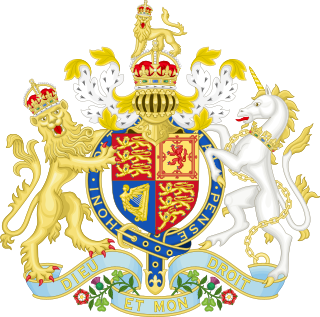
The Government of India Act 1919 was an Act of the Parliament of the United Kingdom. It was passed to expand participation of Indians in the government of India. The Act embodied the reforms recommended in the report of the Secretary of State for India, Edwin Montagu, and the Viceroy, Chelmsford. The Act covered ten years, from 1919 to 1929. This Act began the genesis of responsible government in India. It was set to be reviewed by the Simon Commission in 10 years.

Bageshwar is a district of Uttarakhand state in northern India. The town of Bageshwar is the district headquarters. Prior to its establishment as a district in 1997 it was part of Almora district.
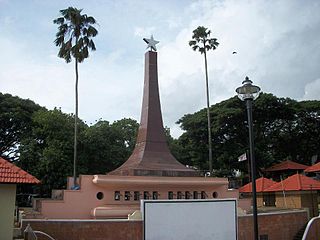
Kuthuparamba or Koothuparamba is a town and a municipality in the Kannur district, state of Kerala, India. It is about 24 km south-east of Kannur and 14 km east of Thalassery.
The administrative divisions of India are subnational administrative units of India; they are composed of a nested hierarchy of administrative divisions.
Pargana or parganah, also spelt pergunnah during the time of the Delhi Sultanate, Mughal Empire and British Indian Empire, is a former administrative unit of the Indian subcontinent. Each parganas may or may not be subdivided into pirs. Those revenue units are used primarily, but not exclusively, by Muslim kingdoms. After Indian independence the parganas became equivalent to Block/ Tahsil and pirs became Grampanchayat.
In Bangladesh, Pakistan and parts of India, a mouza or mauza is a type of administrative district, corresponding to a specific land area within which there may be one or more settlements. Before the 20th century, the term referred to a revenue collection unit just underneath a pargana or revenue district.
Numbardar or Lambardar was the village headman responsible for tax collection in the village during the British Raj. They were appointed under the Mahalwari system.
A tehsil is a local unit of administrative division in India and Pakistan. It is a subdistrict of the area within a district including the designated populated place that serves as its administrative centre, with possible additional towns, and usually a number of villages. The terms in India have replaced earlier terms, such as pargana (pergunnah) and thana.
A village accountant or karanam, patwari, patowary (Assam), talati, lekhpal is a government role in rural areas of the Indian subcontinent. Introduced during the early 16th century, it was maintained by the British Raj. The official, as a representative of the state, is responsible for keeping land records, agricultural records and collecting taxes and acting as the revenue police in certain areas where they were given special jurisdiction.

The Koli is an Indian caste that is predominantly found in India, but also in Pakistan and Nepal. Koli is an agriculturist caste of Gujarat but in coastal areas they also work as fishermen along with agriculture.

Registrar General and Census Commissioner of India, founded in 1961 by the Government of India Ministry of Home Affairs, for arranging, conducting and analysing the results of the demographic surveys of India including Census of India and Linguistic Survey of India. The position of Registrar General and Census Commissioner is now held by a civil servant holding the rank of Additional Secretary.
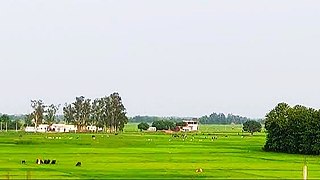
Usia is a village in Kamsaar, Uttar Pradesh, India. It is located southeast of Ghazipur and east of Dildarnagar, near the Bihar State border. The village has a population of 24,786 residents living in 3,471 households. Usia is approximately 7 km from Dildarnagar.
The Mahalwari system was used in India to protect village-level-autonomy. It was introduced by Holt Mackenzie in 1822. The word "Mahalwari" is derived from the Hindi word Mahal, which means a community made from one or more villages.. Mahalwari consisted of landlords or Lambardars assigned to represent villages or groups of villages. Along with the village communities, the landlords were jointly responsible for the payment of revenue. Revenue was determined on basis of the produce of Mahal. Individual responsibility was not assigned. The land included under this system consisted of all land in the villages, including forestland, pastures etc. This system was prevalent in parts of the Gangetic Valley, Uttar Pradesh, the North Western province, parts of Central India and Punjab.
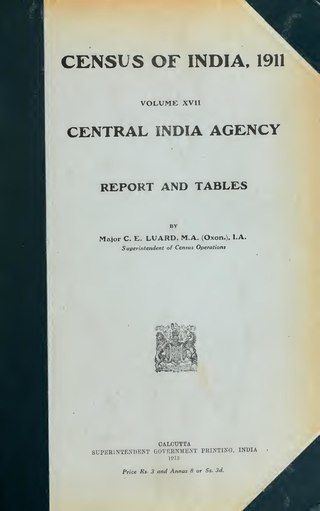
Census in British India refers to the census of India prior to independence which was conducted periodically from 1865 to 1941. The censuses were primarily concerned with administration and faced numerous problems in their design and conduct ranging from the absence of house numbering in hamlets to cultural objections on various grounds to dangers posed by wild animals to census personnel. The sociologist Michael Mann called the census exercise "more telling of the administrative needs of the British than of the social reality for the people of British India". The differences in the nature of Indian society during the British Raj from the value system and the societies of the West were highlighted by the inclusion of "caste", "religion", "profession" and "age" in the data to be collected, as the collection and analysis of that information had a considerable impact on the structure and politics of Indian society.
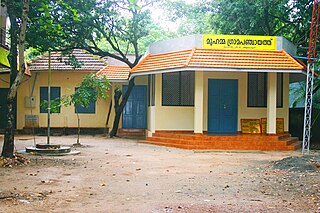
The Panchayat raj is a political system originating from the Indian subcontinent, primarily found in India and neighboring countries Pakistan, Bangladesh, Sri Lanka, and Nepal. It is one of the oldest systems of local government in the Indian subcontinent, with historical mentions dating back to around 250 CE. The word 'raj' means 'rule,' and panchayat' means 'assembly' (ayat) of 'five' (panch). Traditionally, panchayats consisted of wise and respected elders chosen and accepted by the local community. These assemblies resolved disputes between individuals and villages. However, there were various forms of such assemblies.
References
- ↑ "Census of India - Census Terms". censusindia.gov.in. Retrieved 18 May 2019.
- ↑ "Concepts and Definitions". Seventh All India Educational Survey. 30 September 2002. Archived from the original on 17 December 2005. Retrieved 16 August 2008.
- ↑ "Revenue Department, Policy Note 2003-2004" (PDF). cms.tn.gov.in. p. 9.
- ↑ B. Arunachalam, Indian prelude to British cadastral and revenue maps, Coordinates, March 2006.
- ↑ Ramachandraiah, C. (1995). "Revenue Village vs Real Village: Under-Enumeration and Non-Enumeration under Srisailam Project". Economic and Political Weekly. 30 (37): 2301–2302. JSTOR 4403211.